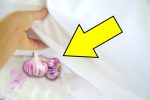
When building that leftover turkey sandwich, you have a lot of decisions to make. Which is better, white or wheat? Is mustard better than mayonnaise? Would you like some cranberry sauce? You’ll have no trouble cutting the sandwich into triangles or rectangles. You’re in good company if you choose the diagonal slice. Diagonal rules are taught by chefs, foodies, architects, and even mathematicians. Why is that?
How It Looks And Feels Determines That
In architecture, the diagonal line has always been king, according to Kevin Harris. Baton Rouge house designer knows his angles. “By exposing the sandwich’s interior, it engages more of your senses before you even bite into it,” Harris says.
Almost like a burlesque dancer, it’s more revealing.” he says. She is sufficiently covered to be clothed, but she is also sufficiently uncovered to be very attractive.”
Bonnie Moore’s argument is also based on aesthetics. Moore, chef de cuisine at The Inn at Little Washington, says the human eye always seeks symmetry. As a four-sided shape like a rectangle is easier to find fault with than a three-sided shape, a triangle is simply easier to see.
A diagonal cut gives the impression that your sandwich is bigger, according to Kemp Minifie. She provided a tip to prove the triangle’s superiority as executive food editor for the recently deceased Gourmet Magazine. Give the plate an elegant vertical dimension by stacking one half of the sandwich over the other.
Minifie says the triangle isn’t just more appealing to look at – it’s also more delicious to eat. The narrower corner can be delicately placed in the mouth – or shoved in when lunchtime is short. The long, crustless hypotenuse gives you ample access to the softer, meatier part of the sandwich, even if you don’t like crusts.
It’s not just staunch foodies who love triangles. Nathan “Spanky” Lewis doesn’t cut sandwiches into rectangles. He has been making sandwiches at Tastee Diner in Bethesda, Md., for 16 years, and he says reputation is everything.
In particular, he likes it on BLTs and club sandwiches. Tastee customers and waitresses rush to agree that squared sandwiches don’t even look like sandwiches. You can’t go wrong with “sailboat sandwiches.”
With any of that, you cannot at all go wrong so why not enjoy your sandwiches by eating the triangular ones instead of the rectangular ones.
Mathematics Tells It All
Consider the numbers, says Paul Calter, emeritus professor of mathematics at Vermont Technical College. No matter how you cut a sandwich, the amount of crust doesn’t change. You can change the amount of surface area without crust by cutting it multiple times and in different directions.
You will have 16 inches of crust if your bread is square and each side is 4 inches long. If you cut the bread in half, you’ll get eight inches of a crust-free surface. According to Calter, cutting the same bread diagonally results in almost 11 inches of the crustless surface. An increase of that magnitude is impressive.
Calter, who writes about math, art, and culture, says the number 3 has always been more popular than 4. The number three represents mother, father, and child, he says. Three represents the beginning, middle, and end. There are three things in life: birth, life, and death. There would be no best if there weren’t three – only good and better.
The triangle is also popular, Calter argues. Platonic’s Theory of Everything declares the isosceles triangle to be the basic building block of the universe. Besides the Holy Trinity, there is also the six-pointed Star of David. In Calter’s view, “a triangular sandwich is an easy way to thank the Lord without actually praying.”


